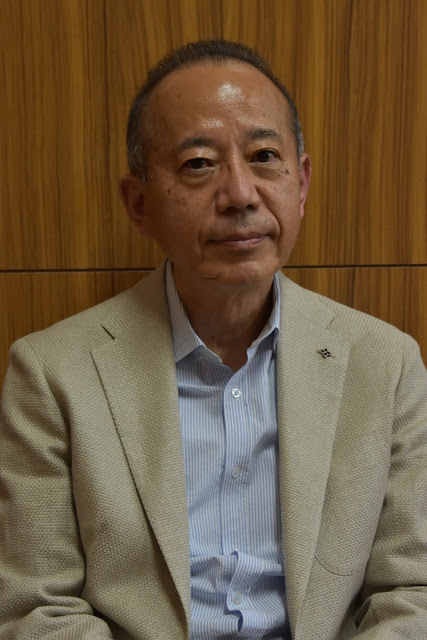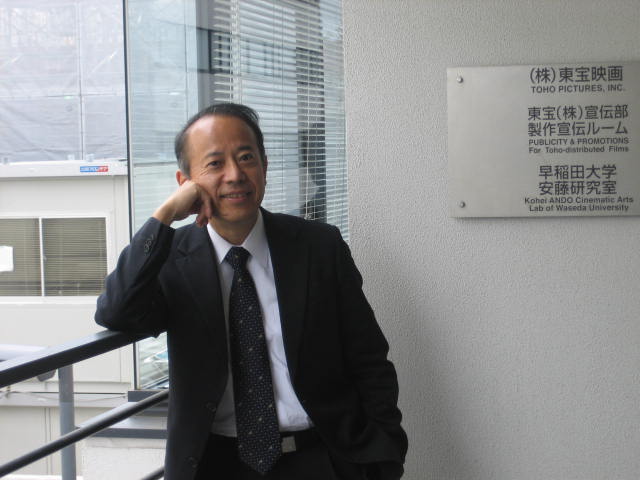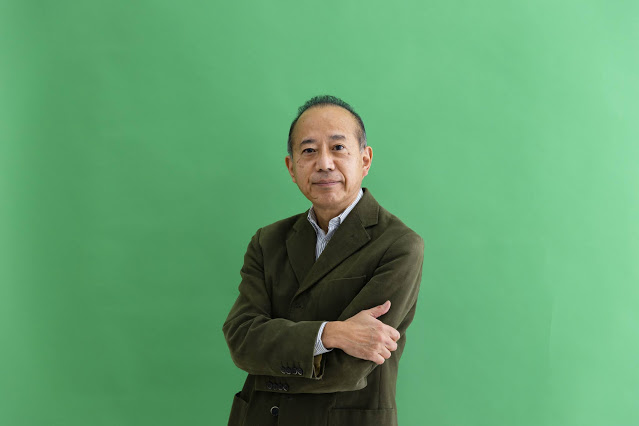Born on February 27, 1952, Shogo Tomiyama rose to prominence in the Japanese movie industry by becoming a producer at Toho Pictures. Internationally, Mr. Tomiyama is well-known for producing the Godzilla series from Godzilla vs. Biollante (1989) through Godzilla: Final Wars (2004). Mr. Tomiyama officially joined Toho in 1975. After working in the publicity department for several years, he became a producer at Toho Pictures in 1983. Between 2004 and 2010, Mr. Tomiyama served as president of Toho Pictures. In March 2021, Mr. Tomiyama answered Brett Homenick’s questions in the first of two separate interviews, translated by Akane Saiki.
Brett Homenick: How did you join Toho?
Shogo Tomiyama: When I was a university student, I worked part-time in the art department of special effects at Toho Studios during the summer holidays of 1973 and 1974. I was able to get a recommendation letter from my boss of the department where I had worked part-time when I took the employment exam for Toho.
BH: Please talk about [your family’s connection to] the Submersion of Japan (1974-75) TV series.
ST: My uncle Tokimaro Karasawa, who was a cameraman, was in charge of the shooting of TV special effects.
BH: How did you become a producer at Toho?
ST: I was a publicity and advertising producer at Toho’s publicity department for eight years. At that time, the Japanese film industry was in a slump, so I was transferred to the production company Toho Pictures in November 1983 as part of the company’s policy to encourage young people to take part in film production.
BH: Please talk about your working relationship with producer Tomoyuki Tanaka.
ST: Mr. Tanaka was the chairman of Toho Pictures, and he was producing Godzilla in 1984, as well as Kon Ichikawa’s films. He was a leading producer at Toho, and I was there in 1979 in charge of publicity for Akira Kurosawa’s Kagemusha (1980), and under his direction, I used to bring the media to the shooting location. After I moved to Toho Pictures, he gave me guidance as a senior producer. Then, in 1986, I started to support Godzilla vs. Biollante (1989) as his assistant starting from the scriptwriting stage.
BH: Why was Kazuki Omori hired to direct Godzilla vs. Biollante?
ST: Producer Tanaka took notice of Mr. Omori’s talents as a scriptwriter. He was ready to ask him to be a director if he could write an interesting script. And, as he expected, Mr. Omori wrote an interesting script.
BH: Why was the proposed 1990 film “Mothra vs. Bagan” ultimately not produced?
ST: After Godzilla vs Biollante, producer Tanaka came up with this idea and wrote the script. However, instead of using the new monster Bagan, he decided to continue with Godzilla and use the strongest monster he could find, so he made Godzilla vs King Ghidorah in 1991.
BH: Were you involved in producing the trailers for the Godzilla series in the 1990s? If so, what were your contributions?
ST: I was from the publicity department, so I supported the publicity department in their work. I consulted with the trailer creators about the content, visual material, and everything else.
BH: In 1992, why was Takao Okawara hired to direct Godzilla vs. Mothra after Kazuki Omori directed two Godzilla films?
ST: It’s better to have a director who has come up through the studio system for films like Godzilla, which the studio does its best to make. Mr. Omori agreed with me on this point. Hence, I think it’s safe to say that it went according to plan.
BH: Did you work with composer Akira Ifukube during this time? If so, what can you share?
ST: At the time of [Godzilla vs. King Ghidorah], I visited Mr. Ifukube at his home and asked him to compose the music. He was in charge of the music every year after that.
BH: What led to the decision to stop using the Japan Self-Defense Force in the Godzilla series and start using the fictional UNGCC organization in Godzilla vs. Mechagodzilla II (1993)?
ST: It was difficult for the Self-Defense Force to cooperate in the filming of the movie because it was too fictional for them to conduct a joint operation with the fictional combat weapon Mechagodzilla. As a filmmaker, I wanted to portray Mechagodzilla as freely as possible, rather than forcing this fictional weapon to be less fictional. Hence, I made the film knowing that I would not be able to get the cooperation of the SDF.
BH: Please talk about the genesis of Yamato Takeru (a.k.a. Orochi the Eight-Headed Dragon, 1994) Why was this film made at the same time as the Godzilla series, and why was it decided to make it a trilogy? After the release of Yamato Takeru, why was the decision made not to move forward with the trilogy?
ST: After knowing that the Godzilla series would have to end in Japan to coincide with the release of the Hollywood Godzilla, we planned and developed a new tokusatsu series called Yamato Takeru. It was released during the summer holidays and was a hit, but it wasn’t a big enough hit to become a series, so it ended after one film.
BH: Were you involved in the negotiations with Hollywood directors and producers to make the American Godzilla movie during the 1990s? Please talk about these experiences.
ST: The negotiations were done by Toho’s international department. I was there to check the maquette on behalf of producer Tanaka. Dean Devlin, the producer, showed us the 3D maquette and explained it to us. I reported the contents of this presentation to producer Tanaka.
BH: How was director Kensho Yamashita different from the other directors on Godzilla vs. SpaceGodzilla (1994)?
ST: It’s the same reason as Mr. Okawara in that he was a director who came up through the studio system. The difference is that, as a producer, I decided to make Godzilla vs. SpaceGodzilla as an interlude of the series with a different tone. In order to do that, I thought it would be good to have a new director who hadn’t been involved with Godzilla before, so I asked Mr. Yamashita to be the director.
BH: Please describe the decision-making process in which Toho decided that Godzilla should die in Godzilla vs. Destoroyah (1995). What other ideas were considered?
ST: The only way to terminate the series was to make Godzilla die. This was something that Mr. [Koichi] Kawakita, the special effects director, had been insisting on since SpaceGodzilla. Producer Tanaka agreed with the idea on one condition, and then we made it happen. The condition was that, even if Godzilla dies, the movie should end in a way that the series could continue. Hence, we made the last scene where Junior absorbs all the radiation from Godzilla and becomes the new Godzilla.
Because CG was still in its infancy, Mr. Kawakita was not satisfied with the way Godzilla’s meltdown looked. So we added a shot where the dorsal fin melts in live action.
BH: Were you satisfied with Destoroyah as a “final” Godzilla movie?
ST: Let’s say if the first film is used as the cover of the Godzilla series, I could make a connection between the characters and the story. Hence, I think I was able to make a back cover for the Godzilla series.
BH: Mr. Omori was hired to write the screenplay for Destoroyah. Why was he so often used during the Heisei Godzilla series?
ST: I think it’s because producer Tanaka wanted to make a new Godzilla movie, and he entrusted that idea to Mr. Omori and Mr. Kawakita.
BH: Please tell us about the decision to make Godzilla 2000 (1999), just one year after the release of the American Godzilla movie.
ST: TriStar’s Godzilla was interesting as a monster movie, but as a Godzilla movie, it had a lot of problems. We thought it was necessary to make a Japanese Godzilla movie right away to show a “real Godzilla movie.”
BH: After Godzilla 2000, a new director was hired, and a new style was pursued with Godzilla vs. Megaguirus (2000). Why was this decided?
ST: Producer Tanaka passed away in 1997, and in order to carry on the Godzilla series into the 21st century, I wanted to make a different Godzilla film with a different director for each film in order to expand the range of possibilities for Godzilla in the future.
BH: What was it like working with director Shusuke Kaneko during the making of GMK[: Giant Monsters All-Out Attack, 2001]?
ST: Before he started [directing] the Gamera series, Mr. Kaneko appealed to me that he wanted to make a Godzilla film. Hence, I tried to make this film as much as I could to meet his wishes. The sales department wanted to make sure that the film would be a hit by making the monsters in the film [more] popular ones, so we asked him to make some changes, and he agreed to do so. I am very grateful to him for his skillful reworking of the script.
BH: Please talk about how Godzilla: Final Wars (2004) evolved over time, and why Ryuhei Kitamura was hired as director.
ST: Godzilla: Final Wars was planned to be a festival film with all the monsters as a finishing touch to the Millennium series. I thought of Mr. Kitamura, who had shown his ability in action scenes, and asked him to make the whole film an action movie. Mr. Kitamura agreed with me 100%, so I asked him to do it.


